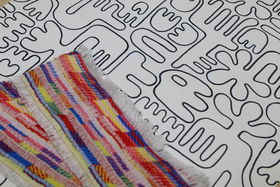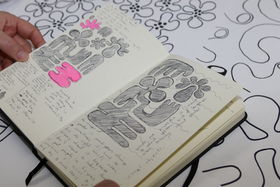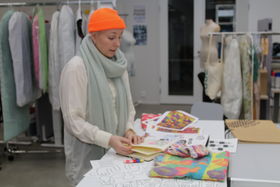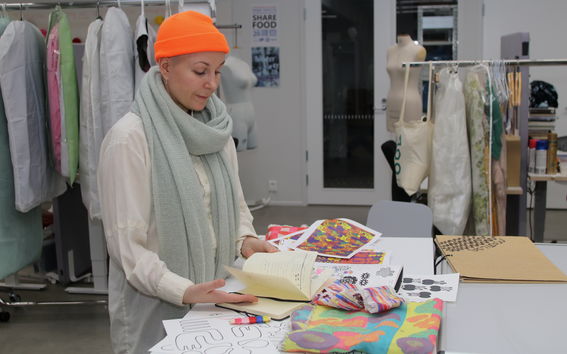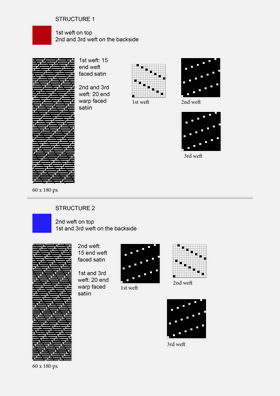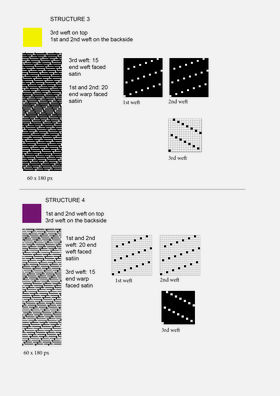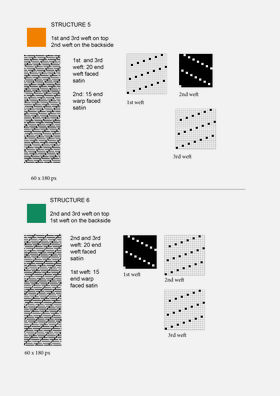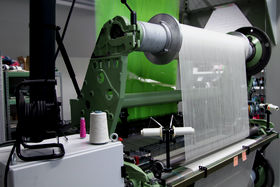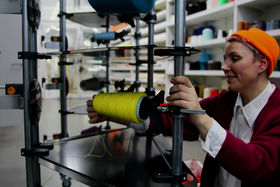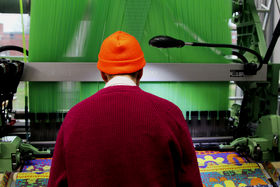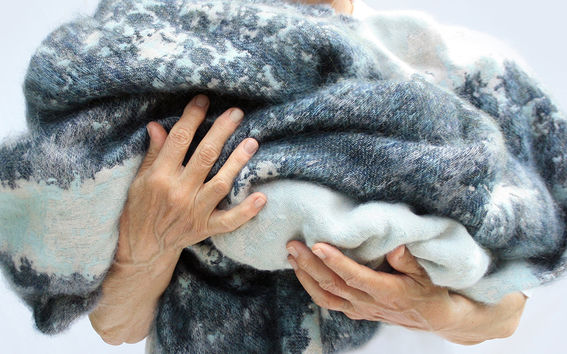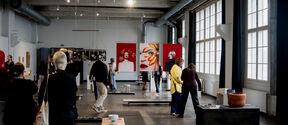In-depth understanding of textile techniques
‘Next, I decide on the structures that I intend to use. In practice, there are endless different kinds of weaves. I want to communicate specifically through the colours, so I’m using a weave that allows the colours to shine. Satin weaves are technically those that 'hide' the white warp thread. That’s why I’m going for a satin weave.
I carefully test out the weaves and the structures and how they work together. I do a lot of different experiments with small test patterns.
After that, I draw the structural images, first on paper and then on the computer. In the weave files, I specify which layer is on the surface of the fabric at any time, which is on the bottom, and how the layers alternate.
I manually draw the image themes I want to use. The flowers in this fabric symbolise equality because, as is well known, ‘all flowers must be allowed to bloom’. Different characters have also appeared; different people living there in absolute harmony.
In order to weave my chosen image themes, I still need to digitize all the images and then add colour ranges and weaves for them.’










